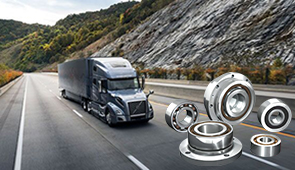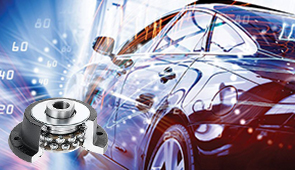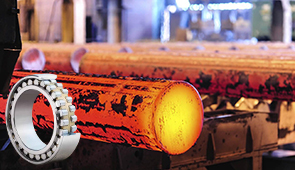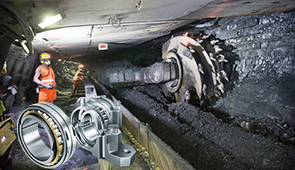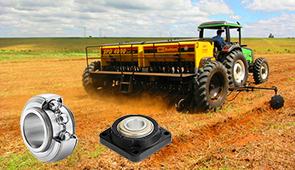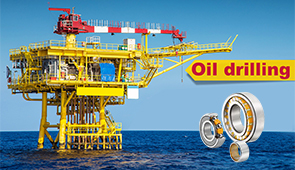Unlocking the Secrets of Precision Taper Roller Bearings: A Comprehensive Guide
Precision taper roller bearings are critical components in a wide range of mechanical applications, known for their ability to support both radial and axial loads with exceptional efficiency. Designed with a conical geometry and optimized for high performance, these bearings are crucial in industries such as automotive, aerospace, and heavy machinery. This comprehensive guide explores the intricate design, functionality, and key advantages of precision taper roller bearings, offering a detailed analysis of their role in enabling reliable operation under demanding conditions. Whether you are an engineer, a machinist, or a professional seeking to enhance your technical understanding, this article provides an authoritative framework to unlock the potential of these indispensable mechanical tools.
What Are Precision Bearings, and Why Are They Important?
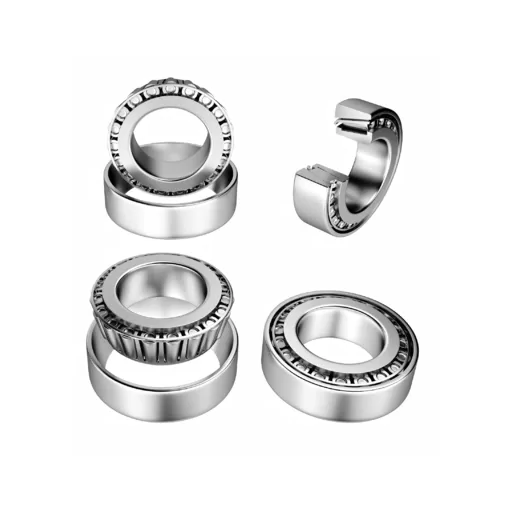
Understanding the Basics of Taper Roller Bearings
Taper roller bearings are categorized as rolling element bearings because of their efficient support of combined radial and axial loads, thanks to their unique structure. I would describe them as mechanical parts made up of an inner ring, an outer ring, tapered rolling parts, and a cage for spacing. These elements are designed to work together, allowing for low friction and high efficiency under heavy mechanical loads.
Their strengths stem from their ability to withstand heavy loads and their relative degree of misalignment, which makes them indispensable in heavy-duty applications like automotive wheel hubs, gearboxes, and machinery.
- Contact angle: Typically between 10º and 30º, this angle impacts the ratio between the axial and radial load capacity. Higher angles afford higher support of an axial load.
- Load ratings: For instance, C dynamic load ratings (C) specify, under repetitive dynamic load, the anticipated duration the unit will function, while C₀ static load ratings suggest the limit of the load at which the unit comes to rest.
- Speed Rating: Indicate the operational limits of rotational speed; commonly referred to in terms of rotations per minute (RPM).
- Dimensional Tolerances: Set by ISO (e.g., ISO 492) about the limits within which the bearing must be crafted so as not to lose conformity within high-precision systems.
Understanding these features in depth facilitates a more comprehensive assessment of their potential integration into different mechanical systems.
Key Features of Precision Taper Roller Bearings
As radial and axial loads in combination are subject to be applied, precision taper roller bearings are specially designed to tackle the various loads concurrently. These bearings come with some features of importance:
- High Load Carrying Capacity: Due to the heavy radial loads requiring the application of axial load in one direction, ones that have tapered inner and outer ring raceways and rollers can support. This is very effective in cases where there are irregular and mixed-out stresses.
- Precision Engineering: These bearings have high accuracy performance requirements that cover industrial engines and automotive gear boxes; thus, they have a precision tolerance band according to the ISO standard metrics, such as ISO 492.
- Dynamic Performance: Capable of achieving an RPM performance measurement base up to maximum limits that are specified about the operating condition, they are remarkably dependable in high-speed uses, where friction and degradation of parts need to be controlled.
- Advanced Materials: Long service life and durability are expected from these bearings built using steel or alloy-grade material due to better thermal and fatigue surface stability offered. These features make them sustain in more demanding systems.
- Customizable Configurations: Having different types of assembly and dimensional configurations, precision taper roller bearings having a defined shaft and housing alignment can be integrated into several mechanical systems effortlessly.
Due to their important features and technical requirements, these bearings are widely used in critical industrial and mechanical systems.
The Importance of Precision in Bearing Applications
The effectiveness, dependability, and efficiency of mechanical systems are ascertained through their performance, which requires accuracy, especially in bearing applications. The accurate precision manufacturing tolerances relieve the bearing and the machinery from wear and tear as they help load distribution, frictional losses minimization and extend their lifespan. Along with reducing bearing life, high levels of precision also eliminate misalignment, which causes vibration, system failure, and energy losses.
- Dimensional Tolerances: Bearings have to conform with tight dimensional tolerances, such as ISO 492/ABEC, to enable the proper alignment and handling of loads.
- Surface Finish Quality: A surface finish which is defined in microns, measuring Ra<0.1 uM, reduces friction and increases lubrication surface area, thus grade aids.
- Runout Accuracy: Controlled radial and axial runout ensure the critical feature of rotary tailor associated with high-speed applications.
- Load Ratings: C and C0 values allow appropriate dynamic and static load capacities, which are imperative to avoid deformation or failure under operational stresses.
- Temperature Range Compatibility: Bearings should comply with specific requirements of thermal expansion tolerances and should not deteriorate with prolonged use above or below certain temperature bounds.
When stringent technical criteria are fulfilled, precision bearings perform exceptionally well under harsh conditions. They also enhance the performance efficiency of the system as a whole.
How Do Taper Roller Bearings Work?

The Design of Taper Roller Bearings
Tapered roller bearings can handle both axial and radial loads due to their specific geometry. The main components of such bearing include an inner ring known as the cone, an outer ring referred to as the cup, tapered rolling elements, and spacers called a cage, which is placed between the rollers. These rollers have the form of a cone, which enables line contact between the raceways and the rollers, increasing the load capacity and relieving the stress concentration as compared to other bearing types, which rely on a point contact.
The angle of taper, which is the wedge-shaped rotational form, is important for the distribution of bearing loads to be achieved. A larger angle makes it easier to accommodate axial loads, while a smaller angle is best suited for a more dominant radial load. For most industrial purposes, standard taper angles range from 10° to 20°, depending on the requirements of the application. The composition of the material is also important. There is high-grade steel, like alloy steels, for example 52100, which possess great wear resistance, toughness, and moderate operating temperatures ranging from -40°F to 300°F.
Furthermore, the design integrates enhanced lubrication channels to reduce friction and heat during operation, maximizing efficiency and mechanical longevity under constant loads. Proper maintenance of gap heights and tolerances guarantees that the bearing functions correctly, with precision classed by norms like ISO 492 or ANS/ABMA. These considerations give their dependable functioning in complex mechanical systems within harsh conditions of operational limits.
Role of the Cup and Cone in Tapered Bearings
Both components, also known as cup and cone bearings, are fundamental parts of tapered bearings, which act as outer and inner raceways, respectively. The cone receives the rolling bearing elements, usually tapered rollers, and positions them accurately. The cup forms the complementary path where the rollers travel. They are designed to take care of radial and thrust loads. These components work together to provide stability as well as load equilibrium.
- Taper Angle: The angle of the face of the cup and cone is extremely important and is usually between 10° and 20°. This ensures that the bearing can accept radial and thrust loads at the same time.
- Surface Finish: SLows down the relative motion of parts of the bearing. A greatly refined surface makes the bearing operate smoothly. Ra > 0.2um.
- Material composition: Usually made of steel like AISI 52100 which is also through hardened or case carburized Add citation. It has better wear resistance and fatigue strength.
- Tolerance class: As per ISO P0-P4 and ABEC 1-7 This guarantees complete and precise control of the dimensions for proper functioning.
These pieces are made with great care, which enables them to withstand very high mechanical and environmental strain while remaining efficient.
Mechanics of Load Distribution
A bearing system’s load periphery largely relies on the relation of contact surfaces, external forces and even material type. The load is not uniformly distributed and the highest concentration is often recorded when rolling elements come into contact with raceways.
- Contact Stress: Governed by the Hertzian contact theory, the load-sharing capability depends on the conformity of the components and the radius of curvature.
- Elastic Modulus: Materials with a higher elastic modulus such as AISI 52100 steel are able to sustain higher stresses, therefore, can more efficiently disperse the load.
- Precision Class: Increased performance is noted in tighter classes of tolerance, e.g. ISO P4 or ABEC 7, where the deflection and the load across elements is more equable which improves the general efficiency.
- Load Rating: Under particular conditions the dynamic and static load ratings checked by ISO and ABMA bear the largest value so the bearing’s rate of load-carrying power is established.
These precise factors guarantee that the bearing functions correctly without losing its physical structure with changing mechanical loads.
What Are the Different Types of Precision Taper Roller Bearings?

Single Row vs. Double Row Bearings
The distinction between single and double rows can be found in their design and load-bearing capabilities.
- Single Row Bearings: One of the limitations of this type is the application of radial and axial loads, which can only be applied in one direction. Typically works when there is limited space, and the direction of the load does not change drastically. The contact angle determines the capacity, as it can range from 10° to 25°. The inner diameter sizes usually range from 20 mm to 200 mm, which makes them appropriate for automotive applications like gearboxes or wheel hubs.
- Double Row Bearings: This type takes advantage of two rows of rollers, enabling them to support greater radial loads and axial loads in both directions. Used in scenarios that require greater rigidity for higher load capacity. Common applications can be found in heavy machinery, pumps, and even in rolling mills. Typically, these double row bearings have larger dimensions, their diameters can go above other types or more than 300 m,m depending on design requirements.
Using any of these two bearers is dependent on the unique requirements the application provides, taking into consideration load, size, and efficiency.
The Role of Cage in Bearing Performance
The cage of a bearing is an integral component that supports the rolling elements in their position and functioning. Its main role is to isolate the rolling elements from each other so their respective loads do not interfere with one another and cause excessive friction. The cage also keeps the rolling elements apart in a manner that avoids contact between them since contact would lead to aggressive wear, excessive heat, and failure in a relatively short period.
Cages are usually made of stamped steel or polyamide or nylon, or brass, depending on the individual and operational requirements of the portion. For example, pressed steel works well in high-speed scenarios, as they are very light and can sustain high temperatures. When low noise is the priority, polyamides are much quieter and lighter. Brass is strong and resists corrosion; therefore, it is used in harsh conditions where strength and stability are sought.
The types of materials and designs of a cage are equally as important as other factors in a bearing’s mechanics, such as its speed, load capacity, and overall lifetime. A design must be chosen that provides the best possible reliability based on the operating environment, which includes the temperature, speed, and even level of lubrication. Cages must also be regularly maintained and inspected to ensure that no damage or deformation would sabotage the bearing’s functionality, resulting in machine downtime.
What Are the Common Applications of Taper Roller Bearings?

Use in Automotive and Industrial Sectors
In my opinion, the tapered roller bearing is the most important in both automotive and industrial fields because of its efficiency in the combination of radial and axial loads.
- Automotive Situation: These bearings are common in automotive wheel hubs, especially in the more demanding markets for heavy vehicles such as trucks and SUVs, where robustness and load-bearing capability are of paramount importance. They ensure easy rotation at high workloads and speeds. Also, these bearings require(lubrication) grease of NLGI 2 grade to prevent wearing out easily.
- Industrial Situation: In industrial applications, tapered roller bearings are incorporated in gear boxes, large conveyors, and heavy machinery. These applications require high axial forces and shock loads to be withstood in an operationally harsh environment. Considering the lubrication and materials, operational conditions can include linear speeds of about 5m/sec and temperatures from -30°C to -120°C. In these conditions, bearings require frequent maintenance to avoid coming failure of bearings due to contamination or overload.
With their particular construction, tapered roller bearings gratify the requirements of sophisticated and highly loaded activities in these vital domains.
Application in Gearbox and Machine Operations
Tapered roller bearings are commonly used in gearboxes and certain machinery due to their efficiency in accommodating combinations of radial and axial loads simultaneously. These bearings also provide a major benefit in precise load applications, such as in high-speed and high-load scenarios, where minimal wear occurs over time.
- Load Capacity: The tapered roller bearings are unique in the sense that they accommodate both radial and substantial axial loads simultaneously. Also, due to the unique shape geometry, the bearings can improve load sharing which minimizes fatigue failure that can be caused by high loads.
- Speed Limit: Depending on the availability of cooling and lubrication systems, these bearings can operate at speeds of up to 3000 rpm, which is effective in fast-paced gear and machinery operations.
- Alignment Tolerance: Due to the construction, these bearings can cope better with any form of misalignments, which is composed of angular movements of as much as 4°. However; a properly designed housing is important to ensure alignment can be kept within certain limits.
- Temperature Range: With proper lubrication, the tapered roller bearings can operate at temperature extremes between -30°C and +120°C. This range can be extended further with the use of advanced materials and specific coatings based on operational requirements.
- Lubrication and Maintenance: The Use of either oil lubrication systems is vital to ensure optimal performance throughout the operational life of the bearing while also helping avoid contamination issues.
To optimize longevity, maintenance intervals should ideally be planned by taking into account dynamic load ratings and environmental factors. These bearings for tapered rollers are expected to be reliable for use in gearboxes and machines due the their high accuracy and robustness, which is essential in such systems.
Addressing Axial and Radial Loads
It is important to consider the effect of each force on the operation and life of tapered roller bearings when analyzing axial and radial loads. An axial load, or a thrust load, is applied parallel to the shaft. Radial loads are applied perpendicular to the shaft. While these two opposing forces are applied, tapered roller bearings are specially made to correspond in both geometry and ability to stiffness and load carrying capacity.
- Dynamic Load Rating (C): It defines the bearing capacity while supporting combined radial and axial loads dynamically. The rating should meet the requirements of the application workload.
- Static Load Rating (C₀): Represents the static load that the bearing can withstand without being deformed. This is important for stationary load or load impact cases.
- Contact Angle (α): Decides the bearing’s axial load versus radial load capabilities. The greater the contact angle for tapered roller bearings, the higher the axial load capability.
- Misalignment Tolerances: guarantee that the load can be distributed correctly. If the misalignment exceeds the permissible limits, then the bearing may suffer from faster than normal wear or even complete failure.
- Lubrication Regime: Proper lubrication keeps friction and wear to a minimum for high axial and radial loads, thus greatly increasing bearing life.
To achieve the best performance of the system, the load ratio, which is axial vs. radial, should be considered as part of the design criteria. When load is appropriately aligned, the bearing operates within its normal limits which helps alleviate the chances of unnecessary abrasion, overheating, or mechanical damage.
How to Ensure the Longevity of Your Precision Bearings?

Maintenance Tips for Taper Roller Bearings
I place great emphasis on a particular maintenance routine to maximize the lifespan of taper roller bearings. This routine includes precise and frequent monitoring, proper lubricant application, and controlled load distribution.
- Lubrication: I choose high-viscosity-grade grease or oil that corresponds to both the operational temperature and the load requirements. For instance, a moderate load operating at 40C sees great effectiveness at a viscosity grade of 12-15 cSt.
- Alignment: Depending on the load that is applied to the bearing, I check to make sure that the axial alignment is set at a maximum of +/- 0.05mm, as this helps reduce the risk of uneven loads and the chances of wear– vibration problems.
- Load Management: I control the ratio of axial to radial loads to ensure they remain within the limit recommended. Most taper roller bearings function optimally with a ratio of 0.2- 0.5.
- Operating Conditions: I keep the temperature within the limits set by the manufacturer, such as standard bearings set between -30C to +120C. This allows for the avoidance of thermal expansion and lubrication breakdown.
- Operating Routine: I always carry out routine inspections, looking for signs of corrosion, contamination, and any surface imperfections. These inspections allow for minor problems to be tackled before they escalate into major failures.
These practices greatly increase the lifespan of taper roller bearings and their operational chances while maintaining system reliability.
Identifying and Solving Common Bearing Issues
In working with recurring issues on bearings, I concentrate on certain problems, e.g., sounds, vibration patterns, overheating, and rotation, among others. Most of them suggest severe rotary issues such as dirt or contamination, lubrication, misplaced parts, or even misalignment. A few examples include the following:
- Noise and Vibration: For example, too high of an amplitude signal could indicate some surface imperfections, dirt within the machinery, or too hefty of a load. I capture abnormal sound levels and excessive vibration patterns using vibration analyzers and later compare them with manufacturers’ acceptable limits.
- Lubrication Failures: A signature of blocked lubrication channel is elevated temperature, along with too high of a preloading force and poor ventilation. With the known average operating temperature range for most rollers, for example, 60°C – 70°C, I often verify with infrared thermometer readings to check against overheating.
- Overheating: A rise in temperature towards the stipulated range(140F – 160F) is often accompanied by too much preloading, dirt, or lack of air circulation. Touch-based or infrared thermometers are useful for quick measurements around a bearing to designate overheating problems.
- Misalignment or Installation Errors: I refer to tolerance values in a bearing’s technical guide for other aspects of the machinery that require more care to detail. Positioning aids such as laser alignment systems enable the efficient attainment of these positions.
Tackling these issues is about accurately diagnosing problems, following engineering standards, and constantly taking preventive actions. With systematic observation and corrective measures, I reduce the chances of malfunctions while improving efficiency.
Frequently Asked Questions (FAQs)
Q: What are precision taper roller bearings, and how do they differ from other types of bearings?
A: Precision taper roller bearings are a type of product designed to handle both radial and thrust loads. Unlike cylindrical roller bearings, they have tapered inner and outer ring raceways, allowing them to accommodate combined loads. This makes them ideal for applications requiring high precision and efficiency.
Q: How do I determine the right bearing size for my application?
A: To select the correct bearing size, you need to know the specific measurements such as ID (inner diameter), OD (outer diameter), and W (width). Additionally, understanding the load requirements and application environment will help in choosing the right product.
Q: What is the interchangeability of taper roller bearings with other types of bearings?
A: Precision taper roller bearings can sometimes be used as a potential replacement for these common bearing part numbers from other types, such as cylindrical roller bearings or angular contact ball bearings, depending on the application requirements and size compatibility.
Q: Are there pre-lubricated options available for taper roller bearings?
A: Yes, some taper roller bearings are pre-lubricated, which can save time and ensure consistent performance. Availability depends on the specific product and manufacturer.
Q: How can I ensure the timely delivery of my bearing order?
A: To ensure timely delivery, please check the availability of products available online and confirm the estimated delivery time with the retailer. It’s also helpful to provide accurate shipping information and choose expedited shipping options if necessary.
Q: Can precision taper roller bearings be used in high-speed applications?
A: Yes, these bearings can be used in high-speed applications due to their design, which includes a tapered roller bearing cone and precise alignment. However, it’s important to verify the specifications of the product to ensure it meets the speed requirements of your application.
UCTH213-40J-300 with Setscrew(inch)
CNSORDERNO: Normal-duty(2)
TOGN: UCTH213-40J-300
SDI: B-R1/8
SD: 2 1/2
UCTH212-39J-300 with Setscrew(inch)
CNSORDERNO: Normal-duty(2)
TOGN: UCTH212-39J-300
SDI: B-R1/8
SD: 2 7/16
UCTH212-38J-300 with Setscrew(inch)
CNSORDERNO: Normal-duty(2)
TOGN: UCTH212-38J-300
SDI: B-R1/8
SD: 2 3/8
UCTH212-36J-300 with Setscrew(inch)
CNSORDERNO: Normal-duty(2)
TOGN: UCTH212-36J-300
SDI: B-R1/8
SD: 2 1/4
UCTH211-35J-300 with Setscrew(inch)
CNSORDERNO: Normal-duty(2)
TOGN: UCTH211-35J-300
SDI: B-R1/8
SD: 2 3/16
UCTH211-34J-300 with Setscrew(inch)
CNSORDERNO: Normal-duty(2)
TOGN: UCTH211-34J-300
SDI: B-R1/8
SD: 2 1/8










